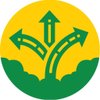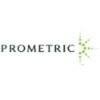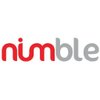
i
Brim
Labs
Filter interviews by
Brim Labs Interview Questions and Answers
6 Interview questions
RAG stands for Red, Amber, Green and is a color-coded system used to indicate the status of a project or task.
RAG is commonly used in project management to quickly communicate the status of tasks or projects.
Red typically indicates that a task or project is behind schedule or at risk.
Amber signifies that there may be some issues or delays, but the task or project is still manageable.
Green means that the task or pr...
UITableView for displaying data in a list format, UICollectionView for displaying data in a grid or custom layout.
Use UITableView for displaying data in a list format, such as a contact list or a news feed.
Use UICollectionView for displaying data in a grid or custom layout, such as a photo gallery or a calendar.
UITableView is simpler to implement and more efficient for displaying large amounts of data.
UICollection...
Bounds refer to the content area of a view, while frame refers to the position and size of a view within its superview.
Bounds are relative to the view's own coordinate system, while frame is relative to its superview's coordinate system.
Changing the bounds of a view affects the position and size of its subviews, while changing the frame affects the position and size of the view itself.
For example, if a view has a ...
Lazy property delays the initialization of a property until it is accessed for the first time.
Lazy properties are useful when the initialization of a property is expensive and not always needed.
They can improve performance and memory usage by delaying the initialization until it is actually needed.
They are declared using the 'lazy' keyword and must be variables, not constants.
Example: lazy var myProperty = expensi...
I have worked on MVVM architecture in my previous project.
MVVM stands for Model-View-ViewModel.
It separates the UI logic from the business logic.
The View interacts with the ViewModel, which in turn interacts with the Model.
I used RxSwift for binding the ViewModel and View in my previous project.
Access control refers to the process of restricting or granting access to resources based on user identity and permissions.
Role-based access control (RBAC) - access is granted based on the user's role within an organization
Attribute-based access control (ABAC) - access is granted based on specific attributes of the user, such as job title or department
Discretionary access control (DAC) - access is granted at the d...
Brim Labs Interview Experiences
6 interviews found
I applied via Naukri.com and was interviewed in Jul 2024. There was 1 interview round.
(2 Questions)
- Q1. What is RAG actually?
- Ans.
RAG stands for Red, Amber, Green and is a color-coded system used to indicate the status of a project or task.
RAG is commonly used in project management to quickly communicate the status of tasks or projects.
Red typically indicates that a task or project is behind schedule or at risk.
Amber signifies that there may be some issues or delays, but the task or project is still manageable.
Green means that the task or project...
- Q2. Explain previous work
- Ans.
Developed AI chatbot for customer service in retail industry
Designed conversational flow using natural language processing
Integrated chatbot with backend systems for real-time responses
Implemented sentiment analysis to gauge customer satisfaction
Utilized machine learning algorithms to improve chatbot accuracy
I applied via Shine and was interviewed in Nov 2023. There was 1 interview round.
(1 Question)
- Q1. Basic questions on javascript
I applied via LinkedIn and was interviewed before Mar 2022. There were 2 interview rounds.

(5 Questions)
- Q1. Difference between bounds and frame
- Ans.
Bounds refer to the content area of a view, while frame refers to the position and size of a view within its superview.
Bounds are relative to the view's own coordinate system, while frame is relative to its superview's coordinate system.
Changing the bounds of a view affects the position and size of its subviews, while changing the frame affects the position and size of the view itself.
For example, if a view has a frame...
- Q2. Architecture I have worked on earlier and explain each
- Ans.
I have worked on MVVM architecture in my previous project.
MVVM stands for Model-View-ViewModel.
It separates the UI logic from the business logic.
The View interacts with the ViewModel, which in turn interacts with the Model.
I used RxSwift for binding the ViewModel and View in my previous project.
- Q3. Different types of access control
- Ans.
Access control refers to the process of restricting or granting access to resources based on user identity and permissions.
Role-based access control (RBAC) - access is granted based on the user's role within an organization
Attribute-based access control (ABAC) - access is granted based on specific attributes of the user, such as job title or department
Discretionary access control (DAC) - access is granted at the discre...
- Q4. What is use of lazy property?
- Ans.
Lazy property delays the initialization of a property until it is accessed for the first time.
Lazy properties are useful when the initialization of a property is expensive and not always needed.
They can improve performance and memory usage by delaying the initialization until it is actually needed.
They are declared using the 'lazy' keyword and must be variables, not constants.
Example: lazy var myProperty = expensiveIni...
- Q5. When to use UITableView and UICollectionView?
- Ans.
UITableView for displaying data in a list format, UICollectionView for displaying data in a grid or custom layout.
Use UITableView for displaying data in a list format, such as a contact list or a news feed.
Use UICollectionView for displaying data in a grid or custom layout, such as a photo gallery or a calendar.
UITableView is simpler to implement and more efficient for displaying large amounts of data.
UICollectionView ...
Interview Preparation Tips
Skills evaluated in this interview
I applied via Company Website and was interviewed before Dec 2022. There were 3 interview rounds.

(1 Question)
- Q1. About Previous work experiences
(1 Question)
- Q1. Related to my work which I had done in past.
Interview Preparation Tips
I applied via LinkedIn and was interviewed in Jul 2021. There were 3 interview rounds.
Interview Questionnaire
2 Questions
- Q1. Previous project experience
- Q2. Basic questions on Vanilla JS, HTML, CSS
Interview Preparation Tips
I applied via LinkedIn and was interviewed before Jun 2021. There were 2 interview rounds.
(1 Question)
- Q1. Basic oops concepts, basic swift question
(1 Question)
- Q1. Basic information, Salary expectation
Interview Preparation Tips
- OOPS
- Swift
Top trending discussions






Interview questions from similar companies

Software Developer Interview Questions & Answers
Rolling Rock Softwareposted on 11 Oct 2020
I applied via Indeed and was interviewed before Oct 2019. There was 1 interview round.
Interview Questionnaire
1 Question
- Q1. General apti question with some verbal ability ques. The ques were easy to solve.
Interview Preparation Tips
I drop the mail to them, but they didnt reply.

MENTAL FAMILIY RELATION
(1 Question)
- Q1. Share ur experience
- Ans.
I have over five years of experience in sales, focusing on building relationships and exceeding targets in various industries.
Developed strong client relationships, resulting in a 30% increase in repeat business over two years.
Consistently exceeded sales targets by an average of 20% each quarter through strategic planning and execution.
Led a team of five sales representatives, providing training and mentorship that imp...

Software Engineer Interview Questions & Answers
Insightgeeks Solutionsposted on 10 Jan 2025
I applied via Recruitment Consulltant and was interviewed in Dec 2024. There was 1 interview round.
(3 Questions)
- Q1. Oops and spring boot
- Q2. The interviewer know that he is the only right person to know about java.
- Q3. Focus on oops and spring
Interview Preparation Tips

I appeared for an interview in Aug 2023.

180 mins test calculatogn
(2 Questions)
- Q1. OOPS questions
- Q2. Design Pattern test
Brim Labs Interview FAQs
Tell us how to improve this page.
Brim Labs Interviews By Designations
- Brim Labs Front end Engineer Interview Questions
- Brim Labs Artificial Intelligence Developer Interview Questions
- Brim Labs Senior IOS Developer Interview Questions
- Brim Labs UI and UX Design Lead Interview Questions
- Brim Labs IOS Developer Interview Questions
- Brim Labs Reactjs Developer Interview Questions
Interview Questions for Popular Designations
Overall Interview Experience Rating
based on 5 interview experiences
Difficulty level
Duration
Interview Questions from Similar Companies
Brim Labs Reviews and Ratings
based on 41 reviews
Rating in categories
|
Software Engineer
4
salaries
| ₹3.6 L/yr - ₹9 L/yr |
|
Area Sales Manager
4
salaries
| ₹10.5 L/yr - ₹12.5 L/yr |
|
IOS Developer
4
salaries
| ₹3.1 L/yr - ₹9.5 L/yr |
|
Senior IOS Developer
4
salaries
| ₹7 L/yr - ₹11 L/yr |
|
Business Development Associate
3
salaries
| ₹3 L/yr - ₹3 L/yr |

HirePro Consulting

Prometric Testing

Dealsdray Online

Nimble Wireless
- Home >
- Interviews >
- Brim Labs Interview Questions










